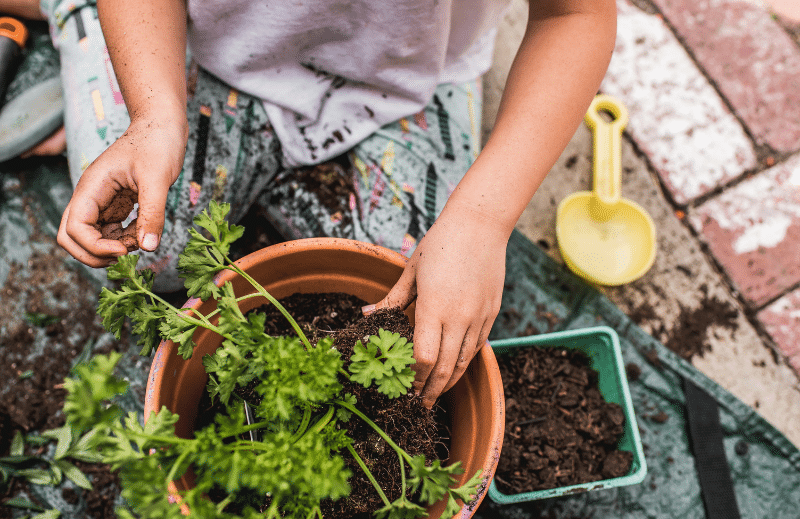No products in the cart.
Parenting
5 Kid-Friendly Gardening: Growing a Love for Nature

Gardening isn’t just for grown-ups! Introducing children to the wonders of the plant world can cultivate not only a love for nature but also teach them valuable lessons on responsibility, patience, and the environment. Here are five fun, easy, and educational gardening activities that are perfect for young green thumbs.
1. Planting a Rainbow Garden
Objective: Teach children about colors and plant varieties by creating a colorful garden space.
Activity: Together with your child, select flowers or vegetables representing every color of the rainbow. Discuss the importance of each color and plant variety. Then, allocate a section of your garden or use pots to plant each color, eventually forming a vibrant rainbow.
Educational Benefit: Enhances color recognition and understanding of plant diversity.
2. Creating a Pizza Garden
Objective: Connect gardening with cooking, encouraging children to grow ingredients for a pizza.
Activity: Dedicate a circular patch of the garden to grow tomatoes, peppers, onions, and herbs like basil and oregano. Let each “slice” represent a space for a different pizza topping. Once grown, harvest the ingredients together and make a homemade pizza.
Educational Benefit: Teaches about where food comes from and the basics of healthy eating.
3. Making a Fairy or Dinosaur Garden
Objective: Stimulate imagination by creating a themed garden space.
Activity: Use a container or a small garden plot to create a fairy garden or a prehistoric landscape with plants, stones, and miniature decorations. Allow children to pick plants that fit the theme and help them design their magical or ancient world.
Educational Benefit: Encourages creativity, planning, and a sense of care for living things.
4. Starting a Compost Pile or Bin
Objective: Introduce children to recycling and the cycle of life in nature.
Activity: Set up a compost bin and teach your child what can and cannot be composted. Assign them the responsibility of adding kitchen scraps to the bin and turning the compost regularly.
Educational Benefit: Demonstrates natural recycling, soil health, and responsibility for the environment.
5. Crafting a Plant Journal
Objective: Develop observation and recording skills.
Activity: Encourage your child to start a plant journal. They can record each plant’s growth, sketch leaves or flowers, and note any changes or new observations. This can be a daily or weekly activity that they look forward to.
Educational Benefit: Enhances observational skills, scientific inquiry, and appreciation for subtle changes and growth.
Engaging children in gardening activities isn’t just about growing plants; it’s about planting seeds of curiosity, respect, and love for the natural world that will blossom throughout their lives. So, grab a trowel, put on some gloves, and get ready to explore the wonders of gardening with your young companion. Together, you’ll not only grow plants but also nurture a lifelong connection with nature.

